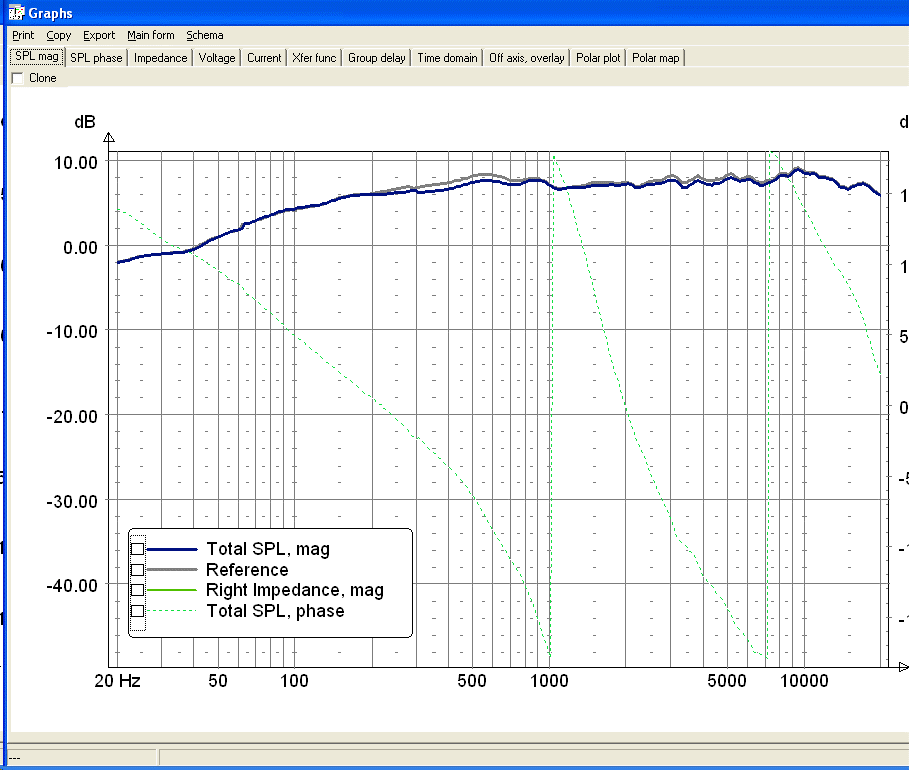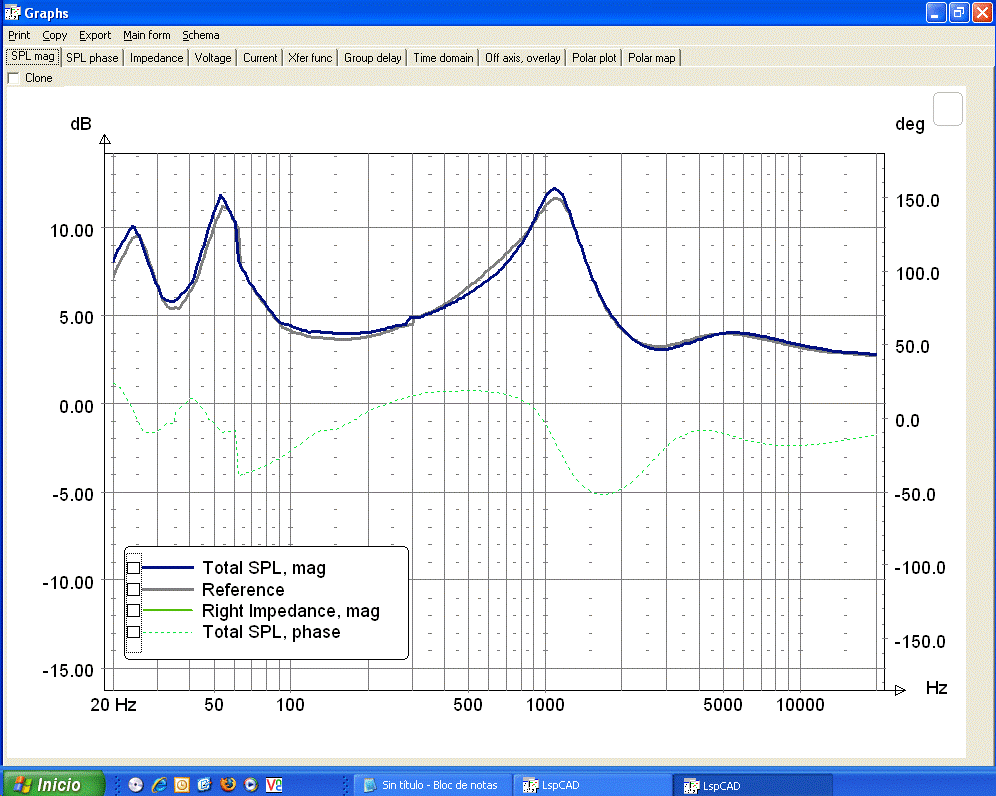Mods - this is a reprint from a previous thread of mine. If you feel it should be deleted, please go ahead.
I decided to repost this because it's a bit off topic from a previous post.
------
(I measured a pair of woofers and a tweeter from each side of a Natalie / Modula tower, because I believed I had issues with the crossover. Here's what I found about the impedance curves).
The tweeters' curve is vastly different, but only on at or below resonance.
The woofers' curve is different by about 0.3 Ohm. I can't understand it. (It shouldn't be an issue, or so I thought. Is this usual?)
So, I took each measurement and simulated it on my crossover design.
This is the FR plot.

Comparing the left vs. right speakers shows that one of them has a midbass hump, and some extra energy on the upper end.
The final impedance curve does vary a bit from the left speaker to the right speaker, too.

I'd guess my question is... is it that normal for drivers to be this different? Should I just live with the difference? (I see no other alternative). Would other drivers be more consistent? I was actually pretty surprised to see how different the tweeters' impedance is (although tweeter response doesn't vary that much).
I'd expect different drivers to behave a bit differently, but not this much. I'd assume this could be a problem.
I decided to repost this because it's a bit off topic from a previous post.
------
(I measured a pair of woofers and a tweeter from each side of a Natalie / Modula tower, because I believed I had issues with the crossover. Here's what I found about the impedance curves).
The tweeters' curve is vastly different, but only on at or below resonance.
The woofers' curve is different by about 0.3 Ohm. I can't understand it. (It shouldn't be an issue, or so I thought. Is this usual?)
So, I took each measurement and simulated it on my crossover design.
This is the FR plot.
Comparing the left vs. right speakers shows that one of them has a midbass hump, and some extra energy on the upper end.
The final impedance curve does vary a bit from the left speaker to the right speaker, too.
I'd guess my question is... is it that normal for drivers to be this different? Should I just live with the difference? (I see no other alternative). Would other drivers be more consistent? I was actually pretty surprised to see how different the tweeters' impedance is (although tweeter response doesn't vary that much).
I'd expect different drivers to behave a bit differently, but not this much. I'd assume this could be a problem.

Comment